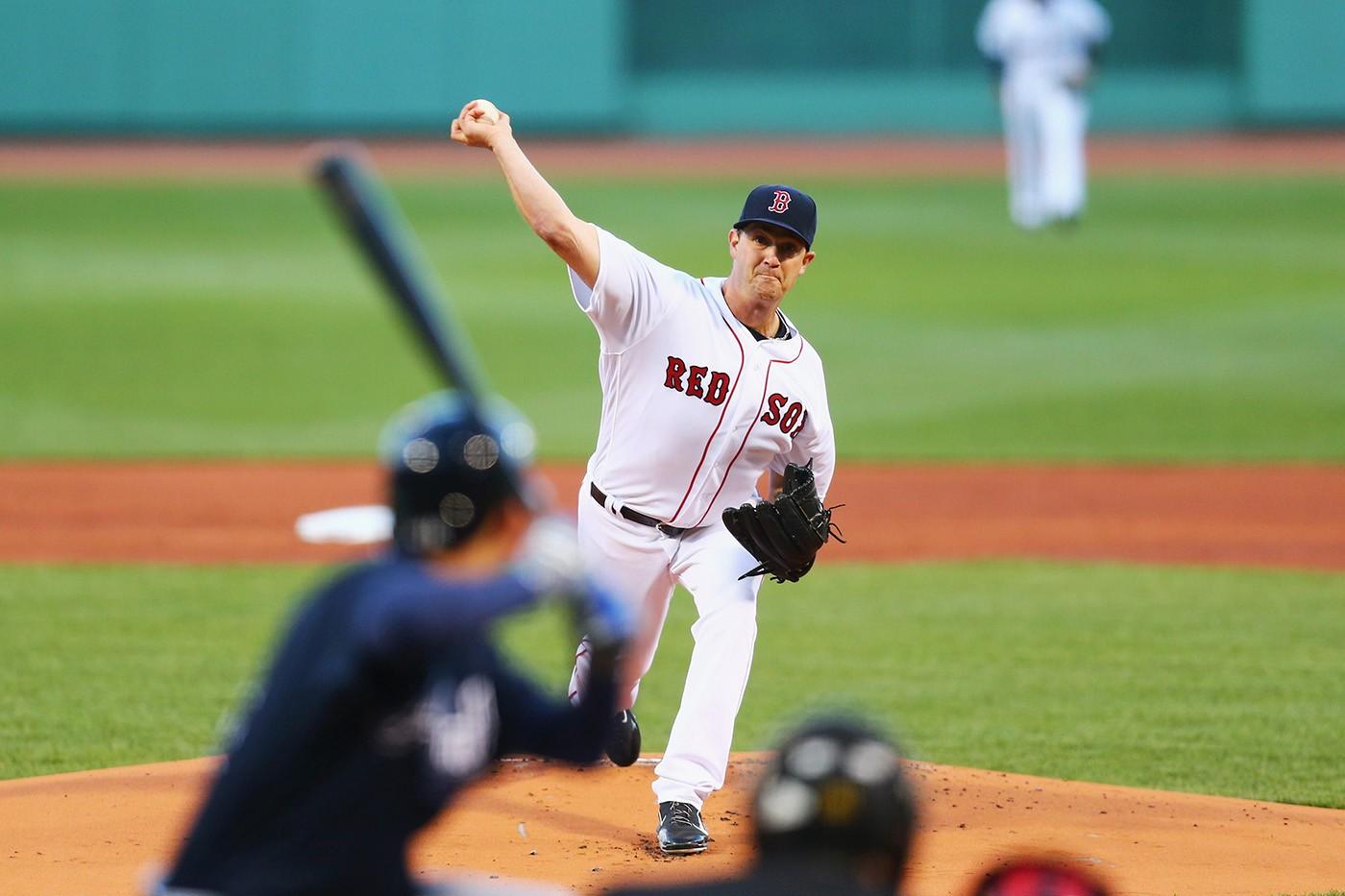It’s a small sample size. Now that we’ve gotten that obligatory baseball caveat out of the way, let’s hop on the Steven Wright bandwagon and point that thing toward San Diego and the Midsummer Classic.
We’re now two and a half months into the 2016 season, and the 31-year-old Wright has been among the best pitchers in the American League. The Red Sox’s best starter (yes, better than $217 million man David Price) leads the AL in ERA (2.09) and ERA+ (214) and is tied with Johnny Cueto, Clayton Kershaw, and Chris Sale for the major league lead in complete games (three). He’s posted quality starts in 10 of 12 outings to date (good for second in the AL in quality start percentage), providing for Boston as consistently as his knuckleball provides headaches for opposing hitters:
Against the Red Sox’s AL East foes, he’s been even better:
So why doesn’t it feel like Wright — who joined Cleveland’s franchise in 2006 as a conventional pitcher, converted to the knuckleball in 2011, and pitched for six different minor league teams before making the majors — has earned the lofty spots he occupies on the leaderboards? The problem with believing that Wright is legit, it seems, is baseball’s hidebound skepticism of the knuckleball in general.
Will his ability to make the ball dance disappear today? What about tomorrow? Is he the next R.A. Dickey, or the next Charlie Zink? How long does a run of success have to be to prove that it’s based on skill and not on dumb luck?
So what if he’s in the midst of what could end up being one of the best seasons by a knuckleballer? To his doubters, he’s still only a knuckleballer.
If the knuckleball came to life, it would be Zach Galifianakis in The Hangover: charmingly guileless, completely unpredictable, and capable of making you both laugh and squirm. But would you trust that guy to deliver consistently? (The Hangover trilogy has grossed more than $600 million, so the answer should be yes.)
Yes, Wright is sporting some unsustainably great stats, including a batting average on balls in play of .254 (the major league average is .297), a career-low 0.33 homers per nine innings, and a FIP, that, at 3.21, is more than a run higher than his ERA (and good for fourth in the AL). But there’s evidence to suggest that Wright isn’t just getting lucky; he’s changed his pitch mix, using his knuckleball less and his curveball and fastball more than he has in the past.
“I think he’s certainly gained confidence with himself,” Red Sox manager John Farrell told reporters this week. “The ability to throw a curveball now this year … is another pitch for him to get back in counts. He’s in complete control when he’s on the mound.”
He’s striking out more batters (21.0 percent in 2016, 16.8 percent in 2015) and allowing less hard contact (26.0 percent in 2016, 33.9 percent in 2015).
Ask the man himself what makes a good knuckleball, as August Fagerstrom did in April, and he’ll point to the seeming contradiction at the pitch’s heart.
“That’s the biggest key to knuckleballs: you want to be able to throw for strikes, but you want them to be inconsistent in the zone,” Wright said. “You don’t want it to have predictable movement.”
FanGraphs’ Jeff Sullivan thinks it’s time to buy in, writing way back on May 31:
“Since the beginning of 2015, Wright’s one of 161 starting pitchers with at least 100 innings. Out of that group, he ranks alone in eighth in ERA-, between Jose Fernandez and John Lackey. Steven Wright hasn’t allowed many runs. The formula is a strange one, but you have to like the results.”
The bottom line is that if Wright keeps putting up numbers like these, he deserves both fans’ respect and an All-Star Game berth, regardless of the unpredictable way he gets there.
